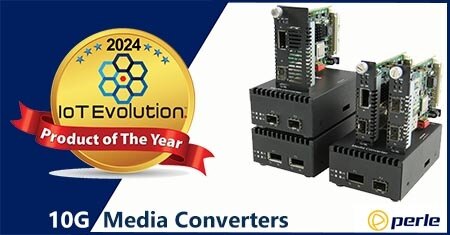
How IoT is helping health care during the COVID-19 pandemic
By Max BurkhalterNovember 12, 2020
IoT, also known as the Internet of Things, has become increasingly part of our lives — from vehicles that can tell you when tread on a tire is getting low, to refrigerators that can sense when your milk is going bad. IoT allows connected devices to dump a continuous or periodic stream of data to platforms and systems, permitting nearly real-time analysis and corrective measures.
How is IoT working to help us during the COVID-19 pandemic? In health care, specifically, there are many ways in which this type of connected technology can provide assistance in times of crisis.
Telehealth visits
Fast legislation in many states allowed for telehealth visits to be approved and paid for by insurance as needed to cut down on non-COVID-related patients needing to visit doctor's offices or hospitals. Being able to use video-chat to meet with and diagnose patients as well as prescribe needed medications or offer therapy virtually prevented many people from having to leave their homes for non-emergent health issues.
Stanford Children's Health has been a leader in telehealth, going from 20 telemedicine visits daily pre-pandemic to more than 700 children seen virtually each day post-COVID-outbreak, the Children's Hospital Associated stated. Combined with school closures and social distancing, these measures may have prevented thousands of children from being exposed unnecessarily to the coronavirus.

Remote monitoring
IoT devices able to track heart rate, blood pressure and blood glucose levels allow patients with pacemakers or diabetes the ability to stay at home while their doctor remains informed. If data shows a patient is approaching a crisis, they can be quickly transported to a hospital but otherwise they can remain under IoT device monitoring in the safety of their homes.
As senior care homes became vectors for the spread of COVID-19, doctors struggled to find ways to care for chronically ill and aged patients without putting other patients at risk. Relief funds were able to be utilized for remote monitoring and virtual visits to cut down on risk of transmission, Healthcare IT News reported.
Tracking
Kinsa smart thermometers were able to track the spread of the virus through fever spikes mapped from data from their devices, according to Kinsa's website. This centralized data helps people in their own communities keep track of where an outbreak may be potentially happening. The ability to create a different profile for each user in a household made these thermometers even more accurate in collecting and sharing cleaned, anonymized data.
Disinfecting
Non-surgical robots connected to the IoT have been put into service in hospitals around the globe, cleaning patient rooms, disinfecting and sterilizing, and fighting COVID-19 contamination with a special UV light that effectively kills the virus, HealthTech reported. Since the light can be harmful to humans, the robot enters the room, the door is closed, then the process is completed. Once finished, the robot alerts workers outside the room that it is safe to open the door again. This reduces risk to frontline essential workers in hospital and other health care settings and speeds the rate at which patient rooms can be turned over and made ready for the next occupant.
IoT in health care was already assisting with patient care before the spread of the pandemic. Especially for the elderly generation (most at risk now), IoT has and will continue to monitor things like calorie intake and exercise, as well as manage insulin delivery or adjust pacemaker rates depending on the state of the patient and their needs. Connected wireless devices have streamlined remote monitoring for faster help in a crisis.
IoT goes further, with the ability to track tagged equipment and alert to problems in an emergency. If a wheelchair overturns, a nebulizer malfunctions, or an oxygen tank starts to run empty, help can be dispatched immediately. Medical IoT continues to protect patients and healthcare workers alike in the face of COVID-19 and will grow even stronger in a post-pandemic world.
Are you planning on taking advantage of IoT and other futuristic tech? Perle Systems is here to help. To learn more about what Perle can do for you, peruse our customers' success stories.



